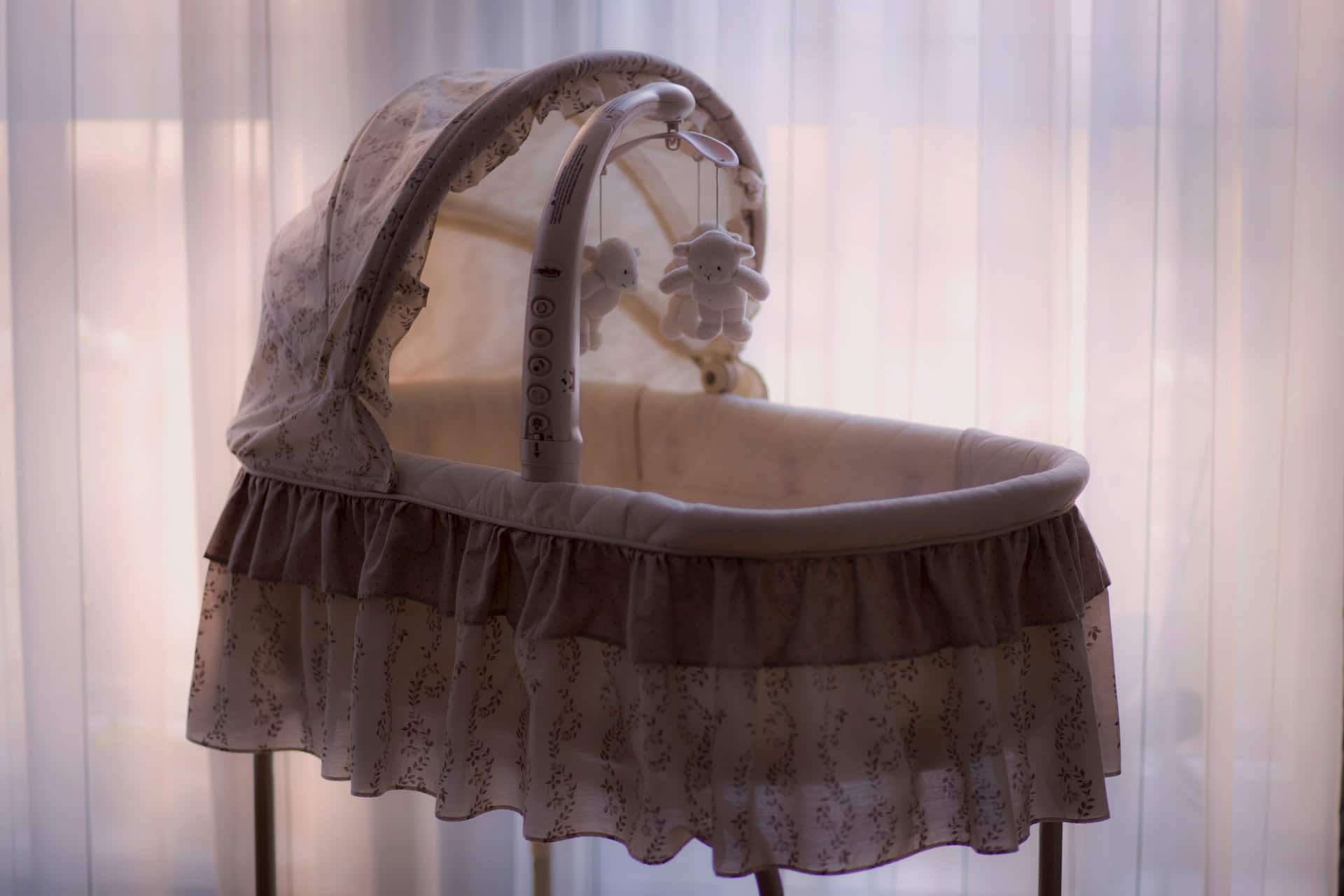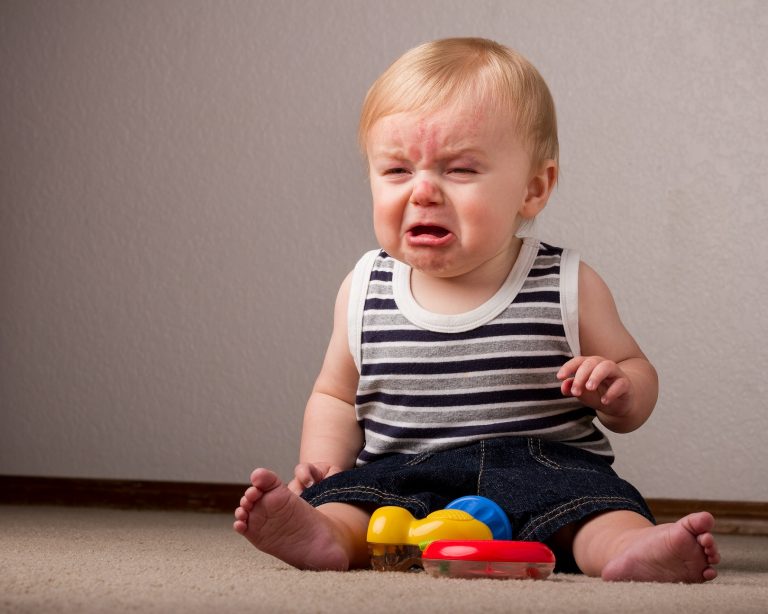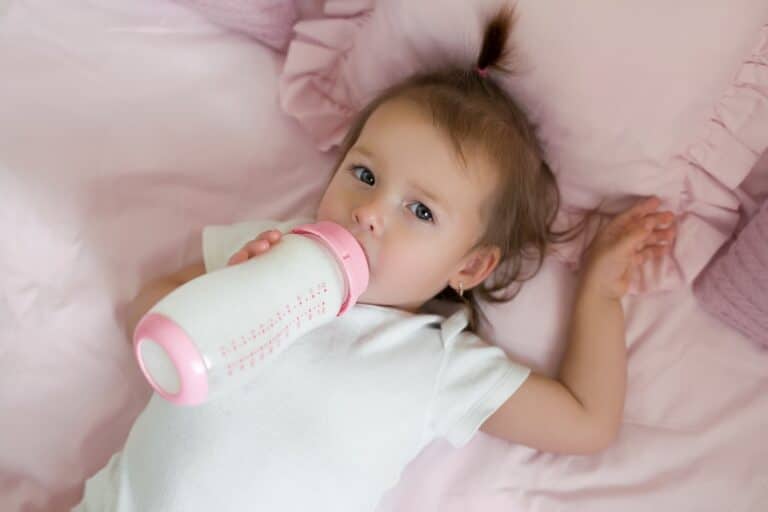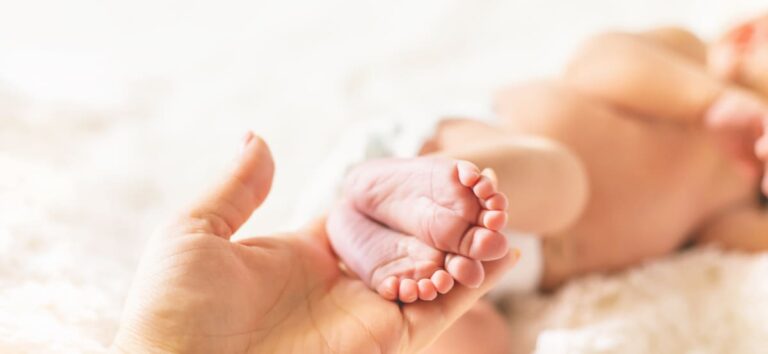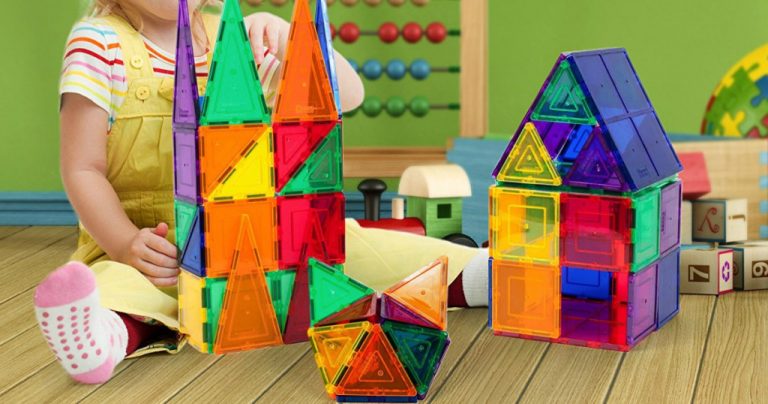A baby’s bassinet is the perfect place for a newborn to sleep. It provides safe and restful sleep, allowing parents more time to get things done without worrying about their little one.
Well, the answer to this question is not so simple. A lot of parents think that it’s fine for their newborns to sleep in their cradle or bassinet until they are 6 months old. There are some exceptions such as if you have two babies and only one crib, or if your child has outgrown his/her cradle. However, most pediatricians recommend transitioning your little one into his/her crib around 4-6 months old because there is an increased risk of SIDS (Sudden Infant Death Syndrome) once they reach 6 months old. In order to keep your baby safe while he/she sleeps, we recommend using a firm mattress with no pillow or blankets.
This handy guide will tell you everything you need to know about what size crib or bed your child should be sleeping in as he or she grows up. We’ve got all of the information right here so that you.
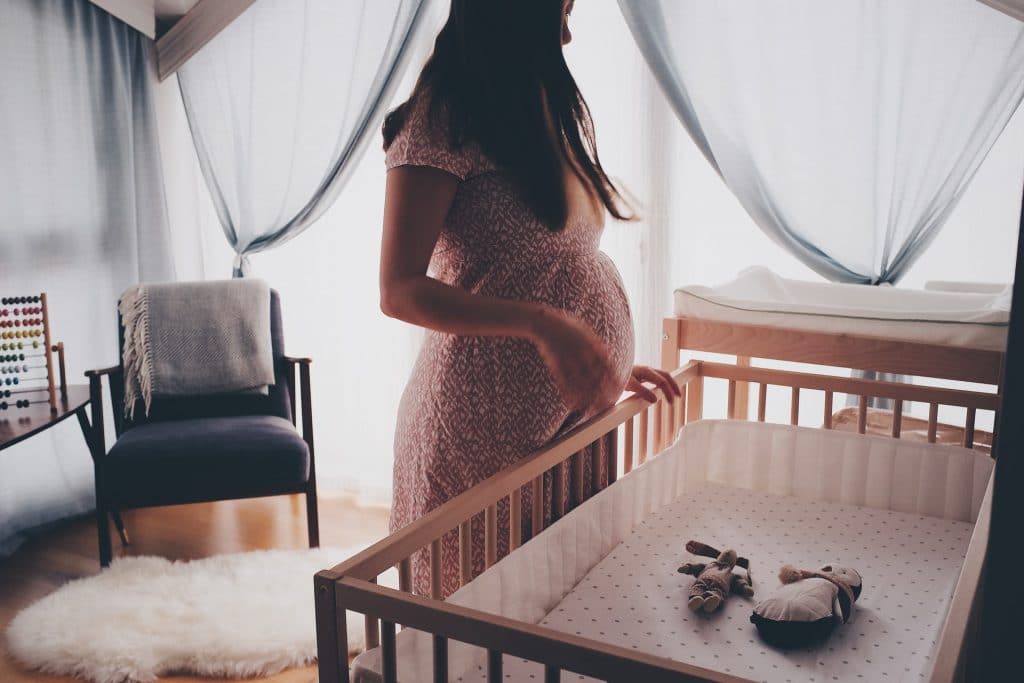
In This Article
When to move baby to Bassinet?
Some babies never sleep in a bassinet or crib. However, some parents prefer to use a bassinet because it is easier to keep your baby near during the first few weeks when they need to eat often and wake up every few hours.
Most babies are ready to sleep in their own bassinet around 3 or 4 months old. One reason is that they might be too big for their bassinet. Another good time to make the switch is right after your baby drops her middle-of-the-night feedings and there really is no rule in this regard because it will vary on the baby and parents’ choice. Some parents prefer to move their baby into their crib right when they arrive home from the hospital, and some keep their baby in a bassinet until they are closer to 6 months old.
When your baby is tired, put them in their crib. This will teach them that cribs are for sleeping. The mattress is more comfy than thin bassinet mattresses.
Though bassinets and cradles can work for babies up to about six months old, the lack of head or side support makes them unsafe once your baby can sit up.
Should newborns sleep in crib or bassinet?
Both cribs and bassinets can provide a safe sleep place for your newborn, but there are important differences between the two. Bassinets are a versatile sleeping option for infants, but have some key differences to consider when choosing one. Cribs take up more space than bassinets and they’re not as portable, which can be important in tight living quarters or if you want to travel with your baby’s bed. Bassinets are also usually less expensive than cribs.
In some cases, bassinets can actually improve your baby’s sleep . When there is a parent in the room, a newborn will often stir as the parents’ movement interrupts their sleep pattern. By placing your baby in an adjacent bassinet, you allow him or her to continue sleeping uninterrupted as you care for your baby.
Bassinets versus cribs Bassinets and cribs are both safe options for your newborn, but bassinets provide more flexibility in where your baby sleeps. Crib safety In general, bassinets meet the same American Society for Testing and Materials (ASTM) standards as cribs. Like cribs, bassinets have a slatted or mesh surface that helps protect young babies from SIDS.
It is important to note that no matter what sleeping arrangement you choose for your baby, always place your newborn on his back to sleep see “Safe Sleep Tips for Babies“. Safety standards Bassinets are designed to minimize the space between your baby and any side rails of their sleeping place. They also must be designed to prevent a baby from getting trapped or otherwise being injured in spaces that are larger than 1/16th of an inch, according to ASTM (American Society for Testing and Materials) standards.
Cribs may not have these gaps because they are not designed to be portable, unlike bassinets.
Because bassinets are designed for portability and emergency use, they tend to have gaps smaller than cribs. This means that while a baby could get trapped between the railings of a crib, this is less likely in a bassinet. Portable Bassinets are also lighter in weight than cribs, and more portable. If you’re living in a tight space or even traveling with your baby, this is a key feature to consider.
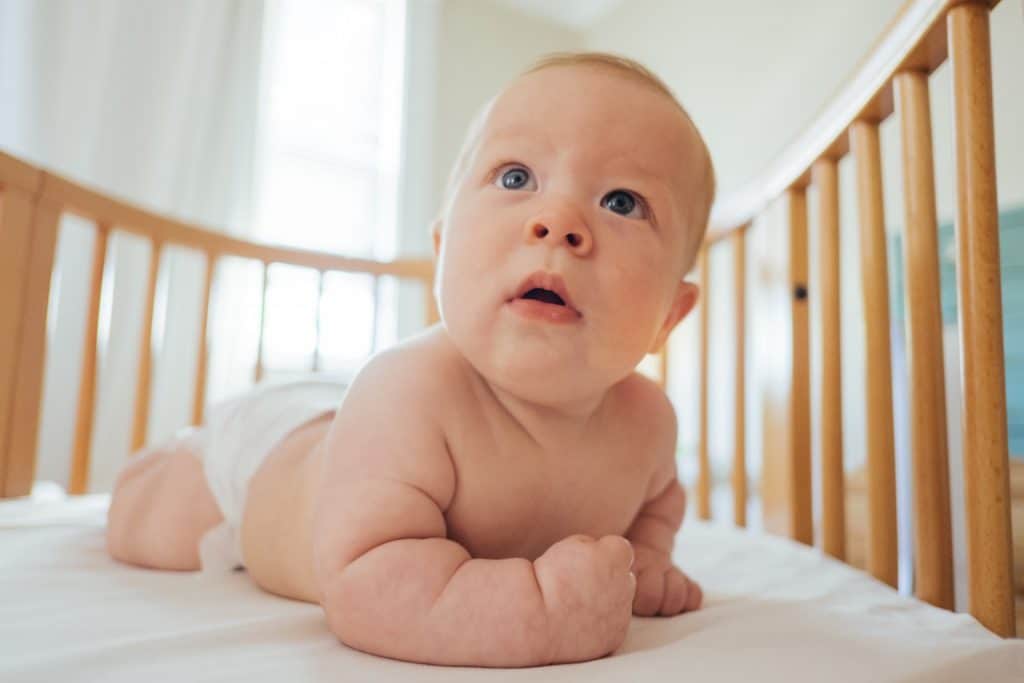
Which one is Better for my Baby : Bassinet or Crib?
You’ve enjoyed the first few months with your little one, and now you are ready to move them into their own room. You want them close by but not too close; what do you choose? A bassinet or a crib? Here’s some information about both options that will help you decide.
First things first: There are two bassinet options, and you will want to choose the right one for your baby. Portability is very important; you’ll need a bassinet that can be easily moved from room to room with baby in it. Mattress options vary as well – some should be used only on a flat surface, and others can be used with bed-frames or slats.
A bassinet should have ample room for baby to stretch out; you don’t want him or her too cramped in the crib. The minimum dimensions of a bassinet mattress is 27 inches by 51 inches (about two-thirds of the size of a standard crib mattress). If the bassinet mattress is too small, it can cause your baby to struggle for positioning when he/she moves.
A bassinet’s depth should be less than 25 inches; otherwise, you could risk suffocation. If there is a canopy or sides on the bassinet that are more than five inches high, this also could pose a suffocation risk. In this case, the bassinet should have mesh that is no more than five inches tall and holes no bigger than ¼ inch.
While it is common to see a baby in a bassinet placed next to your bed (so you can easily reach out if baby needs you), research suggests that being nearby while sleeping should not be the norm. The American Academy of Pediatrics states that babies should sleep in their own beds, close to parents’ bedrooms for no more than the first six months.
You might also want to consider a crib over a bassinet if you will be moving baby to a different home (to visit grandparents or for other childcare), or if you have had concerns about SIDS. The American Academy of Pediatrics suggests that once baby has moved to his or her own room, there should be no loose bedding (blankets or bumpers) in the crib. So if you get a bassinet with large comforters and blankets, you will need to keep those out of the crib when you move baby into it.
Whatever your decision, you will want to make sure that the bassinet is sturdy and easy to clean. And don’t worry; your baby will let you know when he or she wants to move to their own bed (and eventually room). You’ll be ready with a crib or toddler bed set up for them by then!
Can baby sleep in bassinet if rolling over?
you have to decide for yourself what works best, because each baby is different. many babies can sleep in a bassinet without having the ability to roll over. however, some parents prefer cribs because they are safer if the baby sleeps on his tummy (apparently this happens often during deep non-REM sleep). personally, i don’t think its a big deal; my baby can still sleep on her tummy and rolls over just fine. i don’t think its a big deal as long as she sleeps on her back at night with the swaddle.
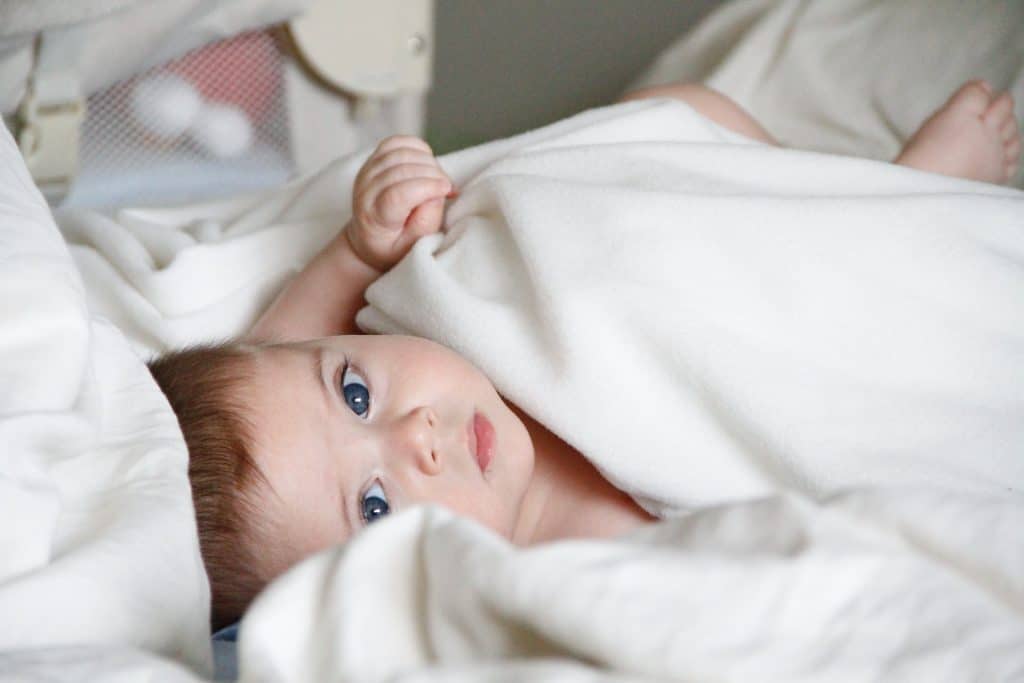
How do you know when baby is too big for bassinet?
– Babies grow fast, so it’s hard to say that your baby will definitely be too big for a bassinet at a certain age. However, most bassinets are designed for newborns, and some say that an infant should be able to sit up (at least supported) in the bassinet by about 3-4 months.
So until you know for sure when baby is too big, use your best judgment and decide what feels most comfortable to you. Also, try to read reviews of bassinets so that you can get an idea of the dimensions and weight limits they provide.
Is a bassinet a good sleeping environment for baby?
Yes, bassinets usually provide a safe and comfortable place to sleep. Because they are open on one side, they may not be the best option if you live in an area with bugs or other wildlife (although some bassinets do come with netting). If your baby is exposed to any infections, always use a sheet between baby and bassinet.
Bassinets can give baby a cozy feeling of being tucked in (when you put blankets in there), but if you are concerned about SIDS or sleep safety, the safest place for baby to sleep is on his back on a firm mattress in his own crib.
How long is baby safe to sleep in a bassinet?
– If you choose to use a bassinet for your baby’s first few months, they can sleep in it as long as you want. Some parents choose to transition their babies out of a bassinet at about 3-6 months, but there is no need to do this if you are happy using the bassinet and baby has room in it.
Is a bassinet good for nap time?
Yes, most parents like to use their bassinets for baby’s naps. A lot of babies enjoy sleeping in the cozy, enclosed feeling of this type of bed (and they can be much smaller than a crib to fit in different rooms). Besides, baby will be waking up and sleeping at all kinds of hours soon enough!
Why is a bassinet a good choice for baby’s first bed?
Most babies do great when they transition from their bassinets to a crib. They are used to small spaces where they can see you and feel secure, and they usually don’t mind making the transition from the cozy bassinet to the crib.
Bassinets can be moved around easily on wheels (which is both convenient and risky). The best way to avoid problems is to use a firm mattress for it (rather than letting baby sleep directly on the springs of a bassinet).
Bottom Line
Some parents may want to wait until their little one is sitting up or rolling over before they move them into a crib, but don’t rush the transition. Babies are typically fine in bassinets for longer than six months and your sleeping habits should also be considered when making this decision. It’s important that everyone in your family gets enough sleep so make sure you’re all on board with whatever plan you decide to go with!

